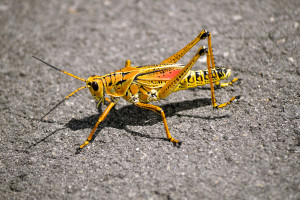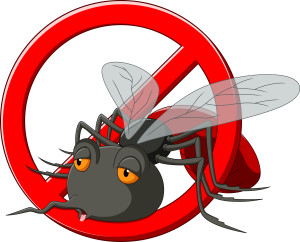 When you think of wildlife in the Everglades, what comes to mind? Alligators? Panthers? Majestic birds? How about insects? Well, they should, because there’s thousands of them flying and crawling around this ecosystem. One such insect that calls the Everglades home is the lubber grasshopper.
When you think of wildlife in the Everglades, what comes to mind? Alligators? Panthers? Majestic birds? How about insects? Well, they should, because there’s thousands of them flying and crawling around this ecosystem. One such insect that calls the Everglades home is the lubber grasshopper.
Lubber grasshoppers are one of the largest grasshoppers, so they can be easy to spot while walking on a trail in the Everglades. They are also slow moving, which also makes it easy for you to catch a glimpse of them. They can grow up to four inches in size.
This type of grasshopper is brightly colored and patterned. They are bright orange, yellow, and red. They have wings, but they are flightless. They can, however, jump short distances. Because of their bright colors, they cannot camouflage themselves well into the green scenery of the Everglades, but their bright colors can be used as a warning to animals not to eat them because of toxicity. In fact, many small mammals and birds can and have become sick from ingesting this grasshopper and learn to not try and taste it again. Because they are toxic, this grasshopper really has no need to move fast.
If this grasshopper feels threatened or is picked up, it will make a loud hissing noise and secrete a foul-smelling foaming spray to irritate its predator.
Lubber grasshoppers eat broadleaf plants, and are known to be a garden pest.They can be found in grasslands or oak woods. They eat leaves of citrus plants, vegetables and ornamental plants. They are known to be a problem when they swarm residential areas and destroy (by eating) plants in gardens. Unfortunately, these grasshoppers aren’t really affected by most insecticides, so the best ways to get rid of them is to hand pick them off plants, stamp on them, or drown them in soapy water.
There are different types of lubbers including: Eastern lubbers, horse lubbers, flightless plain lubbers, and southeastern lubbers. Each type has different jumping abilities and vary a bit in coloring and size.
During breeding season, lubbers lay around 25 to 50 eggs. These eggs are underground during the winter and hatch between March and June. After they hatch, the young grasshoppers will molt their exoskeletons five times every 2 weeks before becoming an adult.
Want to spot this creature on a ride through the Everglades? Explore regions of the Everglades you haven’t seen before on a ride with Captain Mitch’s Airboat Tours. Click here or call 800-368-0065 to book a trip today.
 A visit to the Everglades is a once in a lifetime experience. In the Everglades, you get to see a unique ecosystem that is unlike anything else in the United States. It is a diverse and abundant ecosystem that is an excellent place for the avid nature enthusiast and bird watcher alike.
A visit to the Everglades is a once in a lifetime experience. In the Everglades, you get to see a unique ecosystem that is unlike anything else in the United States. It is a diverse and abundant ecosystem that is an excellent place for the avid nature enthusiast and bird watcher alike.





